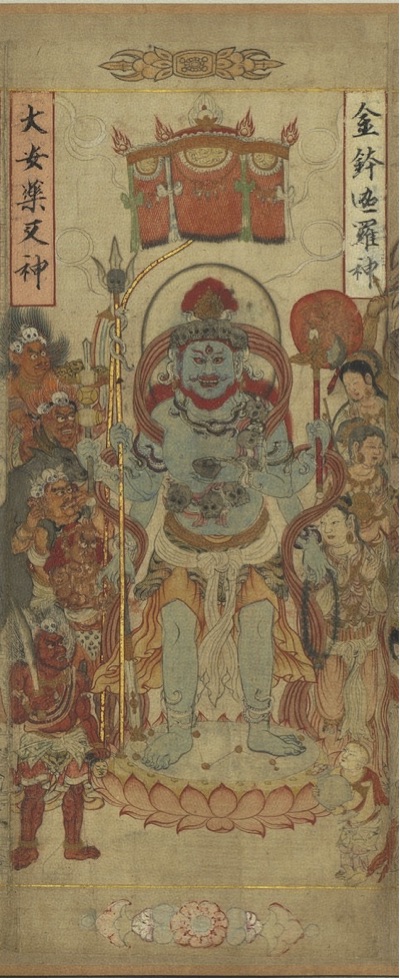China Research Seminar Series talk given by Dr Megan Bryson. University of Tennessee, Knoxville
Though little known in pre-Yuan China, the god Mahākāla (Ch. Dahei tianshen 大黑天神or Mohejialuo 摩訶迦羅) was widely worshipped throughout the middle-period Buddhist world (ca. 800-1400). Texts, images, and objects related to Mahākāla survive from such far-flung places as Pāla India, Tibet, Nepal, Java, Japan, Bezeklik, Dunhuang, Khara Khoto, and Dali. Most of these materials circulated along well-studied routes of transmission, such as the overland silk roads connecting East Asia to Central Asia and eventually to Europe, and the maritime routes connecting East Asia to Southeast Asia and beyond. The Dali Kingdom (937-1253), centered in what is now southwest China’s Yunnan Province, belonged to a different transmission route: the southern (or southwestern) silk road ran from Chengdu through Dali to Bagan, Pāla India, and finally Peshawar, where it joined the northern route. Among the unique materials preserved from the Dali Kingdom are ritual texts, images, and objects related to Mahākāla. These materials introduce the mystery of how Dali-Kingdom Mahākāla worship – and Dali Buddhism in general – developed through interactions along the southern silk road. In the absence of historical records that describe these interactions, Dali’s Buddhist manuscripts and artefacts themselves serve as a material record of transmission. This presentation examines Dali-Kingdom texts and images related to the god Mahākāla to better understand how monks, merchants, and government officials transmitted and received Buddhist materials and ideas along this understudied transportation network.
Megan Bryson is Associate Professor of Religious Studies at the University of Tennessee, Knoxville. Her research focuses primarily on religion in the Dali region of Yunnan Province, especially during the Nanzhao (649-903) and Dali (937-1253) kingdoms. Bryson is interested in how regions such as Dali complicate categories of “Chineseness,” including the category of Chinese religions itself, as well as how gender and ethnicity intersect. Bryson’s first book, Goddess on the Frontier: Religion, Ethnicity, and Gender in Southwest China (Stanford University Press, 2016), traced the worship of a local deity in Dali from the 12th to 21st centuries. She has also published several journal articles in such venues as the Journal of the International Association of Buddhist Studies, Signs: Journal of Women in Culture and Society, and Asia Major. Her current projects include Buddhism on the Southern Silk Road, a monograph on the textual, visual, and material transmission of Buddhism in the Dali kingdom, as well as the edited volume Buddhist Masculinities (with Kevin Buckelew). Bryson’s research has been supported by an ACLS fellowship and she serves on the Board of Directors of the Society for the Study of Chinese Religions and the Tang Studies Society.
| Contact |
|---|
| Professor Adam Yuet Chau: ayc25@cam.ac.uk |

